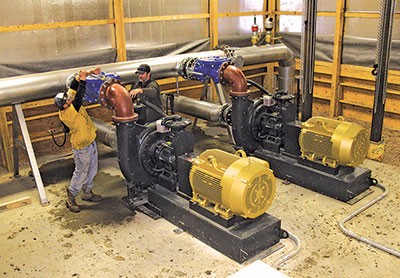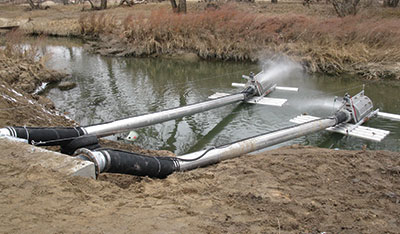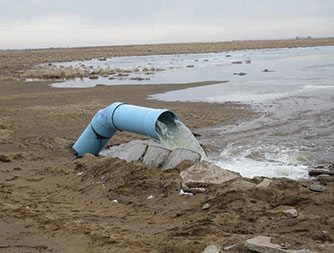Priming and repriming agricultural pumps pose several challenges. The water source is almost always beneath the inlet piping of the pump, demanding greater net positive suction head required (NPSHR). Topography constraints often dictate where an inlet pipe can be dropped, further limiting solutions to the increased NPSHR problem. While vertical turbine pumps are frequently used in agricultural installations, the combination of the pump’s minimal submergence needs, fixed location and drawdown effect can leave the installation unable to pump water for a portion of the year. In areas with widely fluctuating water levels, the problem worsens if the pump draws in enough mud and silt to impede irrigation. Multi-stage pumps address the problem, but because of their solids-handling size they have the added drawback of rocks kicked up in the flow stream.
The Problem
In Colorado, one pump distributor solved problems with agricultural water transfer by employing a technology more often used in mining and oil field pumps. The end user faced all the challenges of topography, changing river beds, NPSHR and vastly fluctuating water levels, in addition to concerns about water rights in irrigating fields. Dry-priming pumps prime and discharge from an enclosed pump house. This allows easy operation capabilities even during harsh Colorado winters. (Images courtesy of Cornell Pump Company)
Dry-priming pumps prime and discharge from an enclosed pump house. This allows easy operation capabilities even during harsh Colorado winters. (Images courtesy of Cornell Pump Company) Water is screened efficiently with the floating system from the South Platte River and drawn through the underground piping.
Water is screened efficiently with the floating system from the South Platte River and drawn through the underground piping.The Solution
The distributor set up two dry-prime, water transfer pumps so the suction strainer basket could adjust to rising and falling river levels. If the pumps stop receiving enough water, they can reprime themselves. They are equipped with a system that allows priming to occur unattended. It does not require a manual shut-off valve to prevent water carry-over to the diaphragm vacuum pump. The selected pump has a 4-inch solids-handling capability for rocks that might pass through the screen or easily moving silt. By using two pumps, the system produces more than 7,000 gallons of water per minute at 120 feet of discharge head. They required only 6.77 feet of NPSHR. The pumps are housed in a building away from the river, where they can be maintained and serviced with ease and comfort—rather than being directly over the riverbank and exposed to the environment. Water is discharged from the pumps into the aquifer. In just a few months, the end user was able to pump more than two years of replenishment for his water back into the aquifer.
Water is discharged from the pumps into the aquifer. In just a few months, the end user was able to pump more than two years of replenishment for his water back into the aquifer.
